Colombian Emerald Industry: Winds of Change
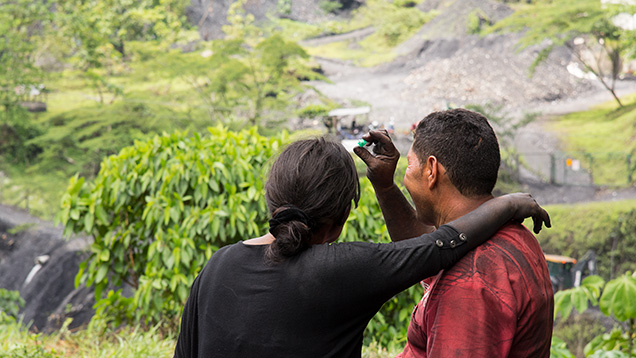
INTRODUCTION
Colombia is synonymous with fine emerald, and production is believed to date back well over a thousand years. Over the centuries the beautiful verdant gemstone, which emerges from areas that are also a lush green, has been linked to violence and human exploitation. Nevertheless, the desire of the Colombian people to mine for this treasure and strike it rich has endured, with enough dreams coming true to drive their passion.
In recent years, industry changes have accelerated, perhaps more profoundly than ever before. While government ownership and regulation, criminal activity, and violence have affected production over the years, the industry’s greatest opportunities may still be ahead. Multinational companies are investing heavily in Colombian emerald mining, which has led to modernization. The government’s position on emerald mining has also improved dramatically in this period. Calls for transparency and traceability have led to branding and a revamping of the industry’s image. The loose system of independent miners (figure 1) is seeing efforts at formalization. These landmark changes are occurring at a time when most of the country’s emerald reserves have yet to be mined.
In October 2015, a joint GIA and Colombian team met at the First International Emerald Symposium in Bogotá to interview industry leaders and government officials. Many topics involving industry change were discussed at the symposium. Afterward, the team traveled to Colombia’s major mines and visited dealers and cutters in Bogotá to document the current state of the mine-to-market industry. We were also able to collect rough emerald samples for the GIA laboratory’s country-of-origin reference collection.
HISTORY
Volumes have been written about the history of Colombian emeralds. Our history section is therefore a brief overview of a fascinating and well-documented topic. Before the arrival of the Spanish in 1499, emeralds were mined by the indigenous people of what is today Boyacá Province. Archaeologists estimate that natives were mining and trading Colombian emeralds as early as 1000 BC (Sinkankas, 1981). When the Spanish arrived, they quickly took over the mining areas and forced the indigenous people into slavery, extracting emerald for European royalty and aristocrats (figure 2), as well as Mogul rulers in India. The inhumane treatment of the natives led Philip III of Spain (r. 1598–1621) to issue a decree protecting them, but the tribes had already suffered greatly by then (Keller, 1981).
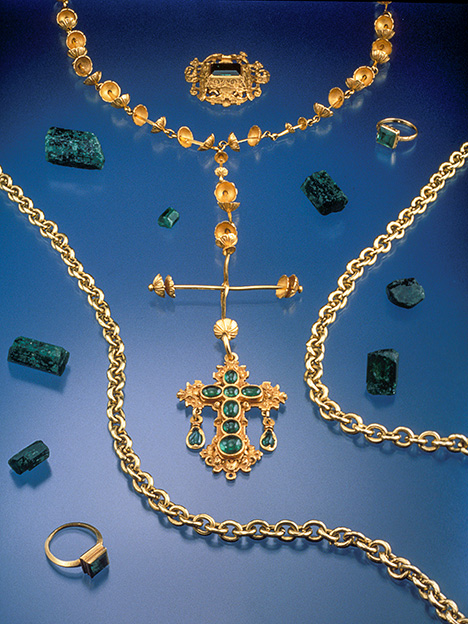
Mines that had been Spanish royal property fell under Colombian government control after independence in 1810. Still, many independent miners—called guaqueros—continued to dig for emerald. By 1979 two companies, Tecminas in Muzo and Esmeracol S.A. in Coscuez, had begun privatized mining. Relations between the two groups became strained. Elements of the Colombian drug cartels tried to infiltrate the industry in the 1980s, leading to the Green War, in which thousands lost their lives. A peace treaty was signed in 1990, mediated by the Catholic Church. Instrumental in the treaty was the legendary Victor Carranza, known as the “Emerald Czar” and considered the most influential figure in the emerald industry at that time (Angarita and Angarita, 2013).
The last five years have seen more foreign investment and multinational companies entering the Colombian mining industry, stronger efforts at formalization, greater transparency, stricter enforcement of traceability, less violence, and new branding efforts to create a marketable image for today’s consumer.
GEOLOGY
As noted by Giuliani et al. (2015), emerald can form in a variety of geological settings but is mainly found in three types of deposits: (1) magmatic-metasomatic, (2) sedimentary-metasomatic, and (3) metamorphic-metasomatic. According to worldwide production data from 2005, about 65% of global production came from magmatic-metasomatic occurrences, while about 28% was from sedimentary-metasomatic deposits and 7% from metamorphic-metasomatic types (Giuliani et al., 2015). Colombia’s emerald deposits are the sedimentary-metasomatic type.
Northwestern Colombia is at the intersection of three major tectonic domains: the South American plate in the east and south, the Caribbean plate in the north, and the Cocos and Nazca oceanic plates in the west (figure 3). The Colombian Andes are the most distinguishing surface features resulting from the interactions between the three domains throughout geological history. Since the end of the Cretaceous period about 70 million years ago, the convergence of the Nazca-Cocos oceanic plate with the South American continental plate has played the most important role in shaping the region’s topography (Colletta et al., 1990).
From the Tierra del Fuego archipelago to Ecuador, the Andes consist of a single narrow mountain belt, but in Colombia the northernmost Andes split into three branches to form a trident-shaped topographic feature (figure 3). These three mountain ranges are the Western, Central, and Eastern Cordilleras; the last is also referred to as the Cordillera Oriental. The three cordilleras are geologically distinct and came into existence at different times (Irving, 1975). The Western Cordillera consists mainly of Upper Cretaceous ophiolitic rocks, while the Central Cordillera is composed of Precambrian and Paleozoic basement rocks intruded by Mesozoic plutons. The Eastern Cordillera is characterized by a thick folded Mesozoic and Tertiary sedimentary sequence overlying the Precambrian and Paleozoic basements (Colletta et al., 1990). The convergence of the Nazca-Cocos plate with the South American plate has been absorbed partly by the subduction along the Colombian-Equatorian trench and partly by the uplift of the Eastern Cordillera.
All Colombian emerald deposits are located in the Eastern Cordillera. Today, the western zone of the Eastern Cordillera is defined by a series of west-vergent thrusts and the eastern zone by a group of east-vergent thrusts (figure 4). The whole mountain range is bounded by the Magdalena River Valley to the west and the Llanos Basin to the east. During the Middle Miocene (peak at approximately 15 million years ago), the active convergent plate movements generated a great amount of shortening in the Eastern Cordillera region and caused uplift. This scenario is the geologically well-known Andean phase. Worth noting is that the Colombian emeralds formed before the Andean phase.
In Colombia, emeralds are recovered predominantly from Early Cretaceous shales. The shales were some of the topmost infill of a marine foreland basin of the Central Cordillera that began in the Jurassic and matured in the Late Cretaceous. Later, the inversion of this basin before and during the Andean phase generated the relatively high topography of the Eastern Cordillera and some of the local structures for emerald crystallization (Colletta et al., 1990; Branquet et al., 1999).
Previous research and field surveys defined two belts of emerald deposits along the two boundaries of the Eastern Cordillera (figure 5). The western belt includes deposits such as La Glorieta–Yacopi, Muzo, Coscuez, La Pita, and Peñas Blancas; along the eastern belt are Gachalá, Chivor, and Macanal (Branquet et al., 1999). The emerald mineralization is associated with hydrothermal fluid circulation and therefore highly controlled by the structural development within each belt. In both belts, emerald is found within shales of Lower Cretaceous age. Although emerald formed under similar geochemical conditions on both sides, the eastern belt mineralization occurred about 65 million years ago in an extensional environment, while western belt mineralization occurred about 33 million years ago in a compressive environment (Branquet et al., 1999).
In the western belt, emerald mineralization occurred when the hydrothermal brine intruded into the organic-rich black shale. The hot brine formed when heated fluid dissolved the evaporites. The salt domes north of Bogotá are the surface breakouts of the evaporites below the emerald-bearing black shales (figure 5). During the inversion of the basin, some of the lower strata, such as the salt layers, were squeezed out and became exposed on the surface. The hot brine either traveled upward through the faults and other structural weaknesses within the black shale or broke its way through.
Western belt deposits are highly controlled by tear faults perpendicular to the thrust front (Branquet et al., 1999; Giuliani et al., 2015). Tear faults are deeply rooted steep offsets within rocks that have a very strong strike-slip component and often form to accommodate the different migration rates of the thrust fault. The almost vertical tear faults provided ideal conduits for the hydrothermal brine to travel through and intrude the surrounding rock (Branquet et al., 1999). During this process, the brine picked up the necessary components to form emerald from the surrounding shale (Pignatelli et al., 2015). When the temperature decreased and certain chemical components reached the saturation point, emerald began to crystallize within the brine veins, along with other minerals such as calcite, quartz, albite, and pyrite.
The western emerald belt is located at the core of the Villeta anticlinorium (again, see figure 5). Its general stratigraphy includes, from bottom to top, basal décollement (possibly where the evaporites are located), Valanginian-Hauterivian dolomitic limestones, Hauterivian calcareous black shales, Hauterivian siliceous black shales, and Barremian-Aptian mudstone (Branquet et al., 1999). Emeralds formed within either the hydrothermal breccia or the carbonate-pyrite veins in the dolomitic limestones and the calcareous black shales (Branquet et al., 1999). In individual deposits, emeralds are extracted along compressional structures such as thrust faults.
Emeralds formed much earlier in the eastern zone. The present topography and structures are the result of the Andean phase uplift (again, see figure 4). The shortening during the uplift is accommodated by many thrusts and folds, so the structures before the Andean phase are overprinted. Yet the structures within some of the important emerald deposits indicate an extensional environment. Conjugate normal faults, extensional fractures, and rollovers are some of the features that show the local stress field at the time the emeralds crystallized. All of these structures were derived from a main mineralized brecciated level (figure 6), and it appears that the initiation and development of these structures are coeval with hydrothermal fluid circulation and emerald formation (Branquet et al., 1999, 2015). Since the extension occurred under the regional compressional environment and was very limited, the cause is still not clear. In contrast to its eastern counterpart, the western belt does not have a regional evaporitic breccia level.
THE EXPEDITION
The 2015 expedition had three main purposes: to present at the International Emerald Symposium in Bogotá; to document the Colombian emerald mine-to-market industry, including the tremendous changes taking place; and to collect rough emerald samples for the GIA laboratory’s country-of-origin database reference collection. We also renewed relationships with the Colombian industry and created new ones.
Andrew Lucas led the industry documentation project; Jonathan Muyal headed sample collection; and videographer Pedro Padua filmed the video interviews, industry activities, and the sample collection process. Field guide and Colombian gemologist Darwin Fortaleché handled logistics, provided guidance and insightful commentary, and recorded GPS coordinates of active tunnels, mine camps, and mine markets. Our resourceful driver, Miguel Gonzalez, who was also involved in emerald mining and trading, provided input and helped guide the expedition.
We were able to document all the major mining operations in one trip through the lush green landscape of the Colombian Andes (figure 7). In Bogotá we observed the emerald cutting and trading sectors. More than 44 hours of video and 10,000 photos were captured, including in-depth interviews in the field with miners, cutters, traders, industry leaders, and government officials.
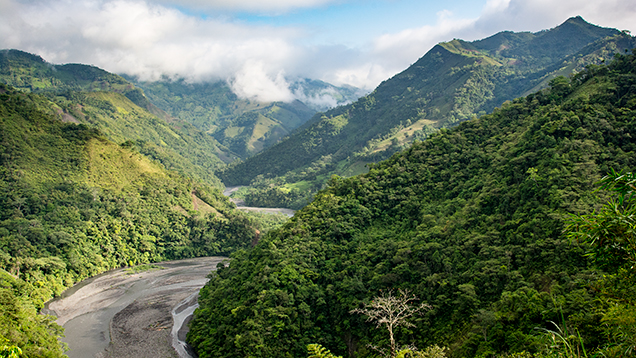
For GIA’s reference collection we collected 1,243 rough emeralds weighing a total of 995 carats. Many of these specimens were obtained directly from miners in the field. Authors JM and AL also mined some deposits themselves, digging into the calcite veins with jackhammers and hand picks to retrieve the samples (figures 8 and 9).

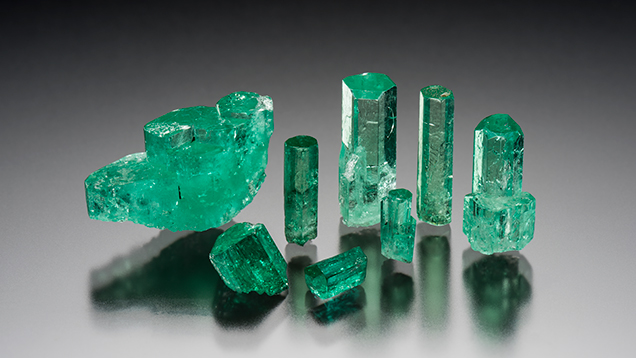
We arrived in Bogotá on October 12, 2015, to attend the three-day symposium. There the GIA team gave presentations, finalized the expedition plan, and interviewed officials about recent changes. The following two days were spent documenting emerald cutting and trading in Bogotá and meeting with Colombian industry members.
Early on October 18 we left Bogotá for Chivor. Our route took us first to the eastern belt mines of Chivor and Gachalá and then to the western belt mines of the Coscuez, Muzo, and La Pita areas. We stayed at mine camps and at hotels in nearby towns. The town of Muzo was used as a base to explore the active mines and markets in the western belt mines. The pace was brisk and usually involved driving at night so we could see the maximum number of mines and markets in our allotted time. By November 1, we were back in Bogotá to prepare the legal export of the emerald rough samples with licensed export brokers and board our return flights. Our expedition was short, given the goal of visiting all the important mining areas in Colombia and documenting cutting and trading, but in the end we were able to cover the entire mine-to-market industry.
EASTERN EMERALD BELT MINES
The production of the eastern belt (table 1) does not match the volume and total value of the western belt, but it still has significant production and can produce high-quality material. These mines are primarily located in the Chivor and Gachalá areas, which are not as developed as those in the Muzo district. The emeralds tend to be more bluish and not quite as saturated as those from the western belt, but they can have higher clarity and are often prized by Chinese buyers looking for the clean, bright material sought after in that market.
Chivor. Upon arrival in the Chivor area, we went to El Manantial, owned by Uvaldo Montenegro. El Manantial had been in continuous production for more than six years. Its name, Spanish for “the spring,” refers to the constant flow of water from the mine due to the groundwater in the mountain. The tunnel is pitched at an incline where possible so the water can run out. Miners had hit a major pocket just four months earlier and were enjoying a small production when we arrived. The emeralds from this tunnel had a classic Chivor appearance: slightly bluish but often very clean and bright.
The area being worked and producing new material was the Scorpion section. El Manantial’s maze-like tunnels are more than 1.7 km long, though some are depleted. One vertical shaft that led to a productive tunnel was nearly filled with water and had to be pumped after every five hours of mining (figure 10), a process that takes two hours. One of El Manantial’s tunnels connects to another important Chivor mine, San Gregorio.
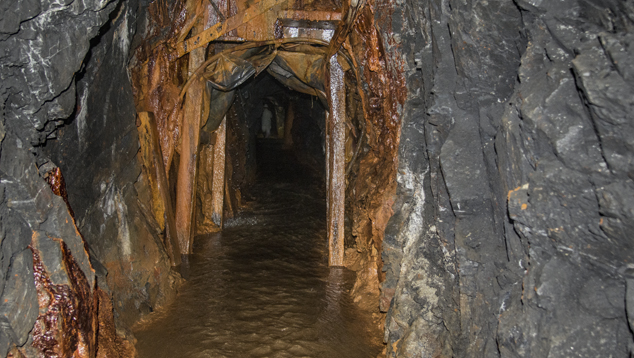
We proceeded to a productive zone where they had advanced the tunnel by blasting and removing rock to access an area containing emeralds. Reaching it required walking through the tunnel for nearly two kilometers, with water coming over the tops of our boots, to a divide where the contact zone between the black shale and the calcite vein contained emeralds. The walls of the tunnel were very wet black shale, and the miners chased the white calcite veins to hit emerald production zones. There were also numerous areas of yellowish calcite along with quartz, pyrite, and even some stalactites overhead.
Lighting was furnished primarily by our headlamps and flashlights. Although ventilation tubes extended through the tunnel, the farther in we went, the more difficult it was to breathe. After documenting the miners extracting emeralds with hand tools, authors JM and AL took turns extracting emeralds with a rock hammer directly from a calcite vein for GIA’s reference collection (figure 11). Next, we witnessed further drilling into the wall face. The miners placed explosives in the drill holes and blasted farther into the calcite vein. During the drilling into the black shale, black dust consumed the area until visibility was down to a few inches.
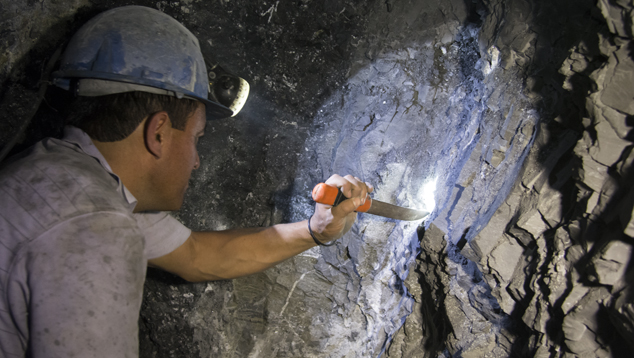
At the mine camp and dining area, workers offered rough emeralds from El Manantial and other mines in the Chivor area for sale. After buying rough samples for GIA’s reference collection, we traveled to Mr. Montenegro’s base camp, Las Cabañas. Here we set up our base to explore Chivor and interviewed Mr. Montenegro against the beautiful backdrop of the mountains.
Mr. Montenegro’s father, Pedro Pablo, started working in Chivor in 1965, first as a cook and then as a miner. After finding some profitable emeralds, he took his share of the proceeds and began buying stones at the mines and selling to dealers from Bogotá. As his profits and expertise grew, he expanded operations to establish an office in Bogotá and began cutting and selling the finished stones himself. Changes to mining regulations in 1991 paved the way for further privatization of Colombian emerald mining. This led the Montenegros to venture into their own mining concessions in 1993.
To lessen investment burden and risk, most Colombian mining operations involve partnerships. Mr. Montenegro works in five concessions in the Chivor area totaling 140 hectares, with interests in another three concessions being developed. He is currently working 15 tunnels on the five existing concessions—including the San Pedro, San Gregorio, El Manantial, Oriente, Piedra Chulo, Quebra Negra, and Gualí mines—with about 15 miners in each. In all, about 50 tunnels in the Chivor area were in operation, and Mr. Montenegro said there were about 15 concessions with working tunnels.
While Mr. Montenegro works with partners, he owns the concessions or mining licenses. In Colombian emerald mining, an association generally consists of the license owner, who holds 50 percent of the utility, and the partners, who pay for expansion and operations and take 50 percent of the production. This can be deducted from exploration and investigation operations as well as other work, all based on agreement with the investors. Mr. Montenegro owns the mining license at El Manantial and brought in investors to cover operating expenses in some of the productive tunnels. He said he takes 50 percent of the profits, and the rest goes to the investors and miners.
The miners employed by Mr. Montenegro, like many others in Colombian emerald mines, prefer to take a percentage of the profits rather than just a salary. The miners often receive a base salary with social security benefits as well as food and housing, but their main incentive is the profit share and the ability to keep and sell some of the production themselves. In this sense, they have the same incentive as the owners to find emeralds.
On the new concessions, Mr. Montenegro was waiting for environmental assessments before mining and looking for investors. For each of these concessions, he had commissioned an advanced geological study to approach the mine planning in a more modern way. He was also considering more mechanization than is typically found in Colombian tunnel mining, which is closer to artisanal mining. With the geological mapping and mine planning, as well as more modern and larger-scale operations, he predicted that the production currently obtained in a year would be achieved in a month. Since emeralds from Chivor tend to be bright and clean, qualities in high demand in China, he had been traveling there to meet with investors.
Mr. Montenegro said that he is able to stay competitive by mining the stones and taking them through the entire wholesale value chain of treatment, cutting, and sales on the global market. Because the emeralds are not changing hands, he is able to avoid markups. There is also the advantage of being able to provide complete chain of custody. This assures buyers of the legality of their purchase and provides a documented supply chain, including the type of filler used during treatment.
After our first day at El Manantial, we visited numerous operating tunnels and documented the San Gregorio mine, owned by the SOESCOL Company, of which Mr. Montenegro is a controlling shareholder, and the Dixon and Tesoro mines, owned by the San Francisco Company. We also observed small-scale processing outside the tunnel operations in the Chivor area (figure 12).
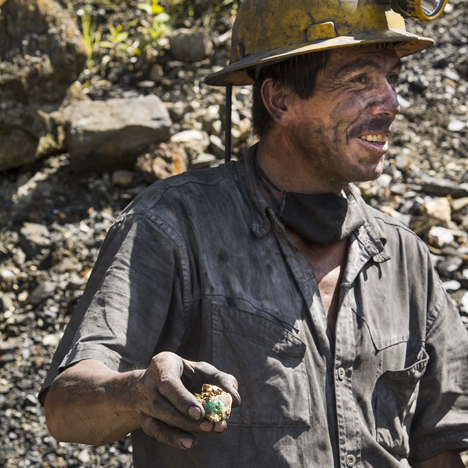
The Dixon mine has been active for more than 30 years. A Canadian company owned the mine from 1995 to 1998, but for the last 10 years the San Francisco Company and controlling shareholder Hernando Sanchez have operated it. The last major emerald pocket was found in 2001, but since then smaller pockets have been found regularly, keeping the mine profitable (G. Lopez, pers. comm., 2015). At San Gregorio, the situation was similar. In December 2014 and January 2015, pockets were found that produced kilos of emerald rough averaging US$12,000 per carat.
At Dixon and Tesoro, the San Francisco Company employs 14 miners permanently, and another seven are on call for when a pocket is discovered. Miners work from 7 a.m. to 4 p.m. for 20 days straight and then have 10 days off. Dixon mine manager Giovanni Lopez, who has worked there for 22 years, summed up the miners’ outlook. While they make a living from the production of small pockets over the years, they are not just looking for a monthly income: They are seeking the big payday. Mr. Lopez said that if he hit a large pocket and became rich, he would invest in other businesses for secure income and continue to mine for another large pocket, for the sheer adrenaline rush of searching for treasure.
In Colombian emerald mining, explosives are a necessity. Water-gel explosives authorized for emerald mining must be purchased from the Colombian military weapons manufacturer Indumil and kept in a secure area according to strict guidelines. The Chivor area has a military presence, and the explosives storage area at each mining operation is guarded by private security. Miners handling the explosives must be certified by the government.
At Tesoro we saw typical Colombian drilling and explosives techniques (figure 13). One of the most difficult assessments was how quickly to advance through the rock to a productive zone without blasting into a pocket and destroying emerald crystals. The drill hole locations also had to be carefully planned to prevent damage to the emeralds.

The miners drilled approximately one-inch-diameter holes into the mine wall, with the hole’s length determined by how far they wanted to advance. The detonator was inserted into the explosives, which were loaded into the drill holes with the fuse sticking out of the hole. A separate fuse was used to light them all. We had about a minute to reach a safe area of the tunnel. After the blast, the wall was inspected for signs of an emerald pocket. Once the rubble was cleared away, the process was repeated. The decision of when to blast is a complicated one, as it must balance the need to reach emerald-bearing pockets with the risk of destroying valuable material.
Gachalá. Upon arriving in Gachalá from Chivor, our first stop was the company Mina La Emilia. We were met at the Diamante mine camp by principal owners Camilo Sanchez, Benito Mendez, and his son Christian Mendez, who is also chief operating officer of Mensal Emeralds. We immediately began examining emerald rough from their tunnels and others in the area. We also met a Chinese buyer, known to author AL, who was buying emerald rough. The buyer was looking for the clean, bright material the Gachalá and Chivor areas are known for.
The next day we had an in-depth look at El Diamante, La Estrella, and El Tesoro, all mined by Mina La Emilia. In Colombia, the name of the concession is often shared by one of its tunnels, in this case the La Emilia tunnel. When dealers refer to the mine an emerald comes from, they might use the concession name or the tunnel name. The La Emilia concession had four active tunnels at the time of our visit.
El Diamante is over 20 years old and begins as a vertical shaft with an elevator that goes down 48 meters to reach a tunnel leading to a second internal vertical shaft. Here we descended by a harness, called la cincha, that was lowered with a winch. The second shaft led to subsequent tunnels and other internal vertical shafts. The productive zones were in the tunnels on the first level we reached by elevator.As we proceeded, we witnessed a common sight in Colombian emerald mine tunnels: the use of wooden braces for structural integrity. The mining areas had an abundance of groundwater, which added weight to the braces and rotted the wood.
As we proceeded through El Diamante, we saw numerous wooden braces fracturing. Additional braces had to be built, and in one extreme case the tunnel’s entire wooden brace structure system had to be replaced. Often a fractured brace had a new one right next to it.
In following the productive diggings, El Diamante’s leadership used a more systematic and thorough exploration methodology. They initially explore through 1,800 meters of a level, following the mineralization, and analyze every 50, 70, or 100 meters, depending on the geology. If they reach 100 meters without indicators of a productive zone, they look for an opposing face. If nothing is found in the opposing face, they make a transverse tunnel, leaving a 25-meter space parallel to the first one, and go back for further exploration. Once they reach the end of the concession area, they stop, move up or down 10 meters, and repeat the process.
The pocket we reached was being worked with a jackhammer to advance along the calcite vein. They had not yet reached an emerald pocket where crystals could be retrieved by hand, but they were close enough that they did not want to blast into the productive zone.
Next we visited La Estrella, a ramp-style tunnel mine that was less than a year old. While El Diamante had a good history of production, La Estrella had not seen significant production by the time of our visit. Nevertheless, there were promising geological indicators that it would be a major producer in the near future. We walked through the tunnels to a zone being worked by the head geologist, who was digging out the calcite vein with hand picks. He thought that they just needed to go deeper into this zone to reach a massive emerald pocket.
While waiting to enter La Estrella, we spoke with the Mendezes. The elder Mendez had been in the emerald business more than 50 years. He was now 82, though one would never know it by the way he moved along the trails and through the mines. He started out dealing in emeralds at Peñas Blancas, Coscuez, and Muzo and then got into mining. During the 1980s and 1990s, he found that mining and doing business in Gachalá was safer than in the Muzo and Coscuez areas. He also preferred the cooler climate and made the transition to Gachalá over 20 years ago, first in open-pit mining and then tunnel mining.
The family has other concessions elsewhere in Gachalá and in Muzo. All of the production is taken to Bogotá, where the partners hold an auction among themselves. The winning partners may sell the rough to cutters in Bogotá or cut it themselves and sell the stones to global buyers. If the Mendez family wins the auction, they cut and sell the production. They use independent cutters in Bogotá, chosen according to the type of stone and their cutting expertise.
Meanwhile, Christian Mendez is seeking to expand the business on the global market. Their global customers range from retail jewelers to jewelry manufacturers and other wholesale dealers. China is the most important customer, with another strong market in the United Arab Emirates. The U.S. market accepts all qualities from the Mendez family, while the Chinese market prefers fine color and very high clarity and brightness, or very large stones of a more modest quality. The UAE is a diversified market for them, as the wealthy and the royal family want the best and largest stones, while some retail jewelers there seek mid-level commercial goods.
The family wants to move up the value chain and eventually sell finished emerald jewelry to retail customers. Christian Mendez spoke of the industry’s future with regard to foreign mining companies. He noted that the country could benefit from mining investment, increased production, job creation, and more tax revenue. At the same time, he sees local Colombian traders and cutters struggling to survive as access to emerald rough has become restricted.
El Tesoro was the third tunnel we visited at La Emilia. It began as a vertical shaft, like El Diamante, but used only a winch-lowered harness system. The harness lowered us to the first level, where a tunnel led to another vertical shaft with wooden ladders to tunnels where the productive zones were.
Our last morning in Gachalá was spent visiting three more tunnel mines—El Toro 1, 2, and 3—for a total of six mines we saw in the district that were either in production or being worked to reach productive zones. Reaching these mines required some hiking through the mountains. El Toro 1 was about a year old and had yet to produce emerald. There were no strong indicators in the tunnel for the miners to follow. El Toro 2 had been worked on and off for about seven months. The area we visited had been worked for four months. The tunnel was 102 meters long, with some indications that emeralds might be found. It had no wooden beam supports and could continue being worked without supports for a time. El Toro 3 had the most activity of the three El Toro mines in Gachalá.
Eastern Belt Mine Markets. The eastern emerald belt did not have the large organized mine markets we would later see in the western emerald belt at Coscuez and Muzo. Miners sold emeralds outside the gate, at the mine camp, and even in the dining areas. Miners and dealers in the town of Chivor sold emerald rough in homes and offices and in the street. More material was available in Chivor, but there was definite interest from buyers in Gachalá. Author JM was able to buy numerous rough samples for the GIA reference collection directly from the miners, including their latest production.
WESTERN EMERALD BELT MINES
Colombia’s most productive mines lie in the western emerald belt (table 2). These include the Muzo (figure 14), Coscuez, and Maripí areas, especially along the Río Minero and Río Itoco. We visited numerous tunnels in these areas, from small operations to large commercial enterprises. We also witnessed firsthand the relationship between small independent miners and large-scale operations. The mine markets in this region were also an important source for sample collection. While the landscape still shows the effects from years of large-scale open-pit mining, all the activity today is tunnel mining.
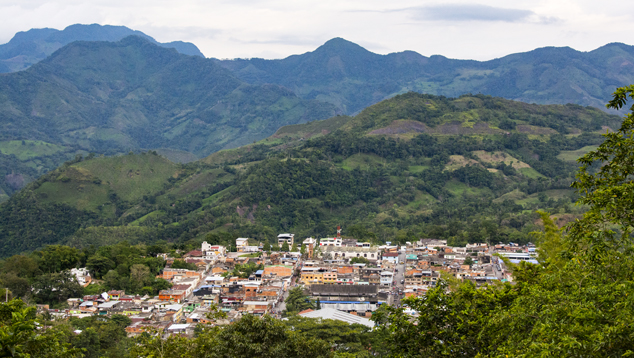
Coscuez. After spending the night in Pauna, we drove to the Coscuez area. We visited the El Chacaro mine market and then the La Paz tunnel, owned by Esmeracol S.A. (Hernando Sanchez, named earlier as a controlling shareholder of the San Francisco Company, is also a controlling shareholder of Esmeracol.) We spent the rest of the day at the La Paz tunnel observing the mining process, including extraction, washing, and trading outside the mine and at the mine camp.
Mine manager Fabian Rodriguez guided our visit through the La Paz tunnel. He comes from a family of emerald miners and has managed operations there for six years. Mr. Rodriguez said that La Paz was founded approximately 25 years ago with the peace agreement that ended the Green War (the tunnel’s name means “peace”).
As we entered La Paz, we saw cart after cart being pushed through to the exit. Open carts containing only shale were removed from the tunnel as the miners blasted forward. Closed and locked carts contained emerald-bearing shale. Meanwhile, water constantly flowed out of the tunnel.
We walked 1,650 meters to the first elevator, which went down 48 meters to a second elevator. This took us down another 35 meters to another shaft and elevator, which descended another 48 meters to a tunnel leading to a productive zone. Several tunnels were being worked at the different levels. The material was bagged in white sacks, placed in the carts, and rolled to the elevators to be sent to the top tunnel and wheeled out of the mine. Unloaded empty carts being pushed back to the working areas constantly passed loaded carts, with just enough room for both.
Between La Paz’s second and third shafts are two tunnels designed for air circulation and another vertical shaft, referred to as a “chimney,” to remove contaminated air. The heat (with temperatures often over 40°C, or 104°F) and 99 percent humidity were draining and often rendered our cameras inoperable. Black shale dust is always in the air, and even masks and respirators do not keep it out of the miners’ lungs. Outside the tunnel their faces were covered in the black shale (figure 15), reminiscent of coal miners from a century ago.
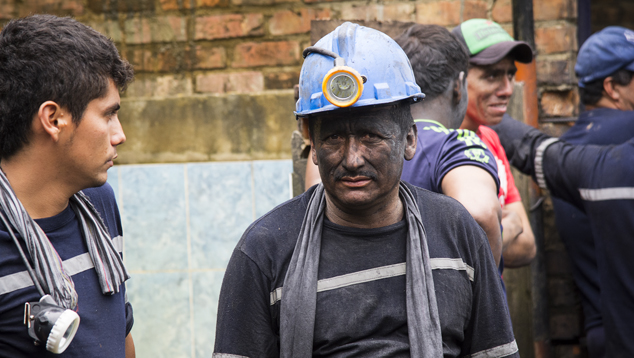
Once the carts exited the tunnels, they were pushed to a simple brick shed, where the ore was washed by hand with traditional net-like screens. This method was used at many emerald mines throughout Colombia. One miner would shovel ore into the net while two others held it at opposite ends. A fourth miner would control water flow from a pipe as the two holding the net washed the ore vigorously. Most of the production was taken to Bogotá, but some was given to miners who would sell it just outside the mine gate (figure 16), at the mine camp dining area, or at the El Chacaro market. At the gate, near the small washing building, locals would wait to receive ore for washing. Allowing locals to wash the tailings is a tradition at Colombian emerald mines.
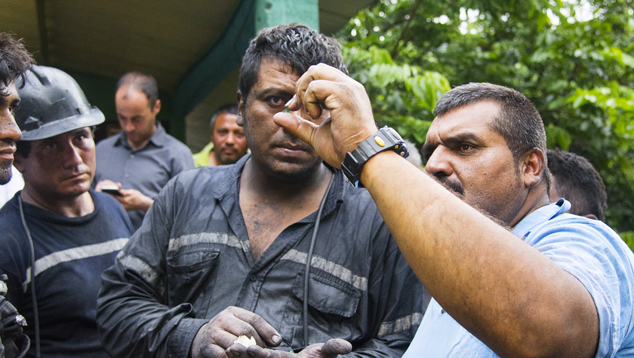
The miners work eight hours a day, five days a week. At the time of our visit there was some emerald production, but nothing “important” according to Mr. Rodriguez. Even so, 98 miners were working in the La Paz tunnel, and the total staff was 105.
After driving back through the El Chacaro mine market, we spent the night at the small but very lively town of Otanche, which had people in the streets and soccer games in the park. The next day we visited three more active mines in the Coscuez area: Pavimentado, Bonanza, and Terraza, all owned by Esmeracol S.A. We interviewed mine manager Andres Murcia and proceeded to the tunnels, starting with Pavimentado.
After walking through the roughly 1,200-meter tunnel, we had to crawl into a productive zone where the miners were extracting emerald from a wide calcite vein. The heat and humidity reached the point where the camera lens was continuously steamed up and had to be wiped free of condensation just before taking a photo. We were able to see emeralds in the calcite veins being extracted by hammer and chisel. Once all the visible emeralds were removed, the miners drilled holes around the pocket and placed explosives to blast farther into the vein (figure 17).
As in the Tesoro tunnel in the eastern belt, the fuses had to be cut long enough to allow time for everyone to crawl out of the pocket to a safe distance from the blast. After returning to examine the pocket, the miners drilled to remove more calcite, and more emeralds became visible for extraction with hammer and chisel.
Bonanza and Terraza were the hottest and most humid tunnels we visited. Steam poured out of the entrances, and the cameras fogged up immediately. Both were smaller operations than Pavimentado. Afterward, we drove back through the El Chacaro market and then on to Muzo.
Muzo. Upon arriving in Muzo we went to the street market and examined the rough emeralds offered for sale. The first tunnel we visited was El Amarillal, operated by Mina Real Limitada, where we interviewed mining engineer Carlos Diaz. The company has 12 tunnels on the concession. A few years earlier, Mina Real commissioned a geological study to determine the possible productive zones and look for geological faults. When zones with potential are identified, the mine operators focus on those specific zones and determine the exploration method that will not cause damage to the tunnels. Exploration methods are different for each mine, depending on its economic potential. Mines with greater potential are more mechanized and have more workers (C. Diaz, pers. comm., 2015).
El Amarillal had been worked for seven years at the time of our visit. The main tunnel is 1,000 meters long, with numerous vertical shafts in exploration or reaching productive zones. When the miners reach a fault, they find kaolinite and carbonate, minerals associated with emeralds (C. Diaz, pers. comm., 2015). But even then there is no guarantee the zone will be productive. El Amarillal has 400-meter-long segments that have been unproductive, though the miners might pass close to the emeralds while following geological indicators. Emeralds form primarily in the veins but can also be found in the kaolinite that is in contact with the veins, or in a bordering zone. Success is uncertain, so two or three different areas must be explored.
To begin, miners break the hard rock with explosives. Compressed air and jackhammers are used to perforate blast holes between 1.2 and 8.0 meters apart, in which the explosives are placed. The person handling the explosives has completed an army certification course. He activates the detonation, which breaks the rocks, and workers with shovels fill wagons with gravel and take them to trucks for removal.
Another system applies when there is production. A manager from the company (wearing a white helmet) and a partner (wearing a red helmet) take control of the pocket. They put a large quantity of emeralds in a sealed locker and carry it out to a washing location. The emeralds are counted and weighed, then sorted and placed in other sealed containers. These stones are set aside and offered for sale at a meeting of partners and investors.
The company has about 60 workers, including controllers, delegates, and mine workers. El Amarillal itself employs about 40 people, half of them mine workers. (In this zone there are also about 200 guaqueros working along the river.) Each work area has a budget for salaries and worker assistance, and the administrative staff is also salaried. Workers receive assistance with their monthly expenses. When production occurs, the workers receive a portion of the rough mined daily or a share of the profits from its sale.
Before tunnel mining began, the company used mechanized surface mining. Although many emerald-bearing veins were unearthed using this method, the environmental impact on the landscape was severe. The area has seen good production at the tunnel mines, not only at El Amarillal but also at the neighboring company’s property. Guaqueros have also found valuable emeralds in the river. When it was an open-pit operation there was more independent mining activity, especially at the river. Mr. Diaz acknowledged that the operation would be more efficient with modern equipment, but this requires a substantial investment, typically from a foreign company.
Mina Real is now about a third of the way into a 30-year contract for the concession from the national mining agency, and they are transitioning from the exploration phase to extraction. They expect to see results because they have reached the productive zone with two decades still under contract. The concession was once owned by Victor Carranza, who gave it back to the state before it was purchased by Mina Real Limitada.
The company’s emerald sales initially take place among the same 14 partners, consisting of companies or independent merchants who make offers to mine representatives. Among those partners are some emerald exporters. From 2011 to 2015, the mine produced 380,000 carats in emerald rough worth US$700 million.
With lighting and ventilation tubes throughout, El Amarillal’s main tunnel was typical of Colombia’s better-operated tunnels. It was hundreds of meters long, branching into other tunnels and shafts. There was plenty of activity, with drilling and blasting and emeralds being extracted and wheeled out in carts. We also observed the battle with groundwater as a miner attempted to dig in a shaft that was constantly filling up.
Río Itoco. We had the opportunity to document two very different activities along the Río Itoco, a tributary of the Río Minero: small-scale mining along the riverbank, and the washing of a large-scale mining operation’s tailings and ore by thousands of locals.
The small-scale operations were along the river, especially where open-pit operations once existed. The miners used water hoses and picks to break up the soil and would either place the material in wheelbarrows for washing by the river or run it through a makeshift sluice (figure 18). Several hundred independent miners were working the area near the Río Itoco mine market (“La Playa”) and El Amarillal. The mining and washing was done in groups, often consisting of family members. At one operation an excavator was used to move material faster. This was the only use of mechanization we saw by these small-scale miners along the river.
We were also present on two mornings when Minería Texas Colombia (MTC) trucks brought tailings and unwashed ore to the riverbanks and dumped them for the locals to wash. It was a captivating sight: a line of trucks coming down the hill from the MTC mining area in regular intervals to drive across the shallow area of the river, slowly raising their hydraulic beds to pour out the tailings without ever coming to a stop. The locals crowded around the passing trucks, and the tailings were spread out to minimize the crush of people.
At first glance, the scene appeared to be a frantic race to scoop up and bag the tailings (figure 19). Upon closer observation, it became clear that there was organization (figure 20). Distinct groups were working together, most likely families and neighbors. The stronger members of the groups would wrestle their way to the tailings and bag the material. They would carry these bags to the river for washing with net-like screens while the rest continued to gather as much of the remaining tailings as they could.

Women were involved in the operation at all stages, from scooping up the tailings to washing them. Virtually everyone was covered in black shale. Meanwhile, numerous buyers waited nearby to make offers. They were easily identified by their clean clothes and the traditional white towel, used to wipe the emerald rough before examination, draped around their necks. If the locals did not immediately receive the price they wanted from the buyers by the river, they would simply walk up the hill to the La Playa market to find a better offer.
Minería Texas Colombia. We spent a full day at the MTC emerald mine, part of Muzo Emerald Colombia. Mine manager Carlos Contreras Cañizo, a native of Mexico, had a background in gold mining using modern methods. He compared the two types of mining.
“With gold you are looking for veins, and you can count on a fairly predictable range of how many grams per ton will be extracted. This can be readily mapped through core sampling and geological studies. With emeralds you follow indicator minerals and find more pockets than a relatively even distribution. So with both gold and emerald, the more earth you mine, the more material you can extract.
“But with emeralds it is far harder to predict the amount per ton, if not impossible, and far harder to predict when you will find them. The other factor is that the gold extracted from a mine has predominantly the same value. However, emeralds extracted can vary tremendously in value, and they cannot predict where the higher-value material is.”
Predicting where to find the higher-value emeralds is a challenge even for a large, sophisticated mining operation like MTC. Mr. Cañizo said it was “fifty percent knowledge and hard work, fifty percent luck, and God bless you.”
In 2009 MTC was a partner in the Muzo mines, including the famous Puerto Arturo mine. Mr. Cañizo had envisioned creating ramps connecting the different levels to a central ramp for the vehicles, transporting miners via the same shafts used for ore and machinery. At that time MTC was operating Puerto Arturo in a partnership with Coexminas, a Colombian company that had controlled the mine since 1977. One of the three principal partners of Coexminas was Victor Carranza, the “Emerald Czar.” Production was split fifty-fifty between the two companies. Part of the deal was a clause stipulating that MTC create 3,200 meters in tunnels or forfeit the arrangement, which limited the mining methodology Mr. Cañizo could pursue. After Mr. Carranza’s death in April 2013, MTC acquired the mine and began implementing a ramp and new methodology.
MTC extracts emeralds in a manner similar to that of other Colombian tunnels, using drills and jackhammers to reach the emeralds and then hand picks to extract them. They also use a similar washing process of screens, water, and human muscle. MTC is working six mines or galleries: Palo Blanco, Puerto Arturo, Tequendama, Catedral, Pablo Sanchez, and Matefique (using contractors at the latter two). The main mines in production are Puerto Arturo, Catedral, and Tequendama.
Puerto Arturo is the deepest shaft, currently at 152 meters, while Tequendama is about 85 meters deep and Catedral has two shafts, one 20 meters and the second 60 meters. When Mr. Cañizo took over as mine manager, all the shafts were independent from one other. Now they are connected by tunnels, and the goal is to have a ramp intersect the tunnels currently in production. The La Rampa tunnel is spiral shaped, extending about 400 meters underground to connect all the tunnels. La Rampa is MTC’s testing ground for geological research and optimized extraction techniques.
Production from the pockets can be dramatic. In May 2015, MTC recovered 152,000 carats from one area, including large stones weighing up to 1,200 carats. The total yield for 2014 was over 240,000 carats, and by the time of our visit in November 2015 they had produced 384,000 carats for the year (C.C. Cañizo, pers. comm., 2015).
After the ore has been washed, the emeralds are separated into four qualities: precious (large sizes, high quality, intense color), chispero (small sizes, high quality, intense color), crystal with tone (good form, light to medium tone), and morralla (poor quality). The rough stones are placed in envelopes labeled with the weight, basic quality classification, and tunnel of origin and then picked up for transport to Colombia Texas Transformadora (CTT), a cutting facility in Bogotá’s free trade zone.
Muzo Emerald Colombia has invested more than $50 million in modernizing the MTC mine, including ramps to connect the tunnels. The mine employs more than 800 people (figure 21), many of them from the nearby communities. They also support area schools and a health clinic that serves more than 1,000 local people (Burgess, 2015).
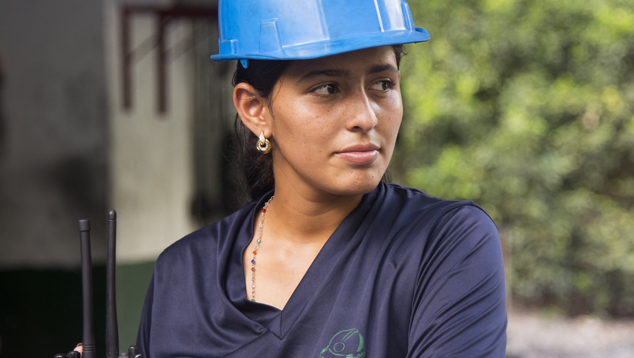
Maripí. As with Muzo, mining operations in the Maripí area have changed substantially in recent years. In 2011, two of the authors (DF and AL) visited mines in this area along the Río Minero, including La Pita, Cunas, Totumos, Polveros, Los Españoles, Bonanza, and Consorcio, which was not in operation during this visit.
In the Maripí area we began at Polveros and Los Españoles, documenting mining activities at the latter and interviewing mine manager Fabian Arango. Los Españoles has been worked for about 30 years, but the operation has been more professional in its methodology since 2011. There is usually a workforce of 15 miners at the tunnel. We saw a continuous flow of carts between the mine and a shed where the material was washed with net-like screens (figure 22). The tunnel branched off into others, with the one on our left containing a working productive zone. There was also a 60-meter vertical shaft leading to tunnels with productive zones, but the groundwater seeping in at the lower level had to be pumped out constantly.

The productive zone runs at a 45-degree angle to the vertical shaft and is about 500 meters wide, with the most productive area about 100 meters wide. This productive zone extends to the La Pita, Cunas, and Consorcio mines in Maripí (F. Arango, pers. comm., 2015). This high-potential zone is very expensive to work because of the groundwater filling the tunnels and shaft.
After an important production, mine management will call the partners, who distribute goods to the shareholders. Mine management and the partners seal the emeralds and take them to Bogotá, where they choose the stones to be cut and those to be kept as rough specimens. But first the miners are allowed to go through the rough, and with management they determine what percentage and qualities they will be given to sell on their own. The production percentage they receive is in addition to their salary compensation package, which includes social security and bonuses. The last important yield was in December 2014, from the production zones in the tunnels that extend from the vertical shaft.
La Pita. At La Pita we took a detailed tour and interviewed mine manager Javier Puerto, who had 20 years of emerald geology, prospecting, and mining experience. Operated by Zuliana de Esmeraldas, La Pita opened in 1995. The first significant production came in 1999, when miners found an emerald-bearing pocket. Mr. Puerto began working for the company that same year, when the tunnel was already 1,200 meters long. The concession is about 39 hectares. Mr. Puerto said that since his arrival, the mine had been worked consistently. He pointed out that the deposit is all one mineralized strip extending from Polveros, Totumo, Cunas, Consorcio, and La Pita up to Puerto Gringo.
We entered the mine through the main tunnel and proceeded 625 meters inside to the first vertical shaft, which was 35 meters deep. At 700 meters we encountered the second shaft, which was 42 meters deep. A hundred meters farther was a 44-meter shaft. Two additional shafts, both much shallower, were filled with water and not being worked at the time. When an area is not being worked, the acidic water corrodes the wooden structure and rusts the metal in just a few months. We went to all the levels, with the fifth level 110 meters below the main tunnel floor. On each level we visited all the productive tunnels and most of those under exploration. The current mine extends from 120 meters below the mine floor to 30 meters above it.
La Pita has several emergency exits in case of flooding, including an exit to the north by Puerto Gringo, and a ventilation chimney. An extractor is used to pump air into the tunnel and down every shaft, up through the working areas, and then out through the chimneys. As a result, the air in the tunnel and shafts is remarkably fresh and free of the gases that can build up in a mine: sulfuric acid, carbon monoxide, carbon dioxide, and even nitrogen oxide, a byproduct of explosives. Pipes bring in electricity from the surface, and an internal control station reduces the energy lost from carrying it over a distance.
The company hires people from the region to ensure as much benefit to the local community as possible. They employ about 120 people per shift, in two groups—from 6 a.m. to 2 p.m. and from 2 p.m. to 10 p.m.
Mr. Puerto noted that emerald deposits are geologically very different from other types of deposits. Most other mineral mining is geometric: Miners advance to find a layer of certain thickness, width, and length, which means constant production can be managed by week, month, and year. With emerald mining, the production zones are variable and output is never constant. Companies might spend two or three years preparing a mine, or they might recover emerald after just 15 days of operations. Every time miners go deeper into a Colombian emerald tunnel, the water level rises and extraction becomes more difficult. Exploration for new veins and pockets through horizontal levels often continues for one or two years until they find the veins. A single vein might be searched for a day, a week, a month, or longer. In many veins, no emeralds are ever found.
According to Zuliana de Esmeraldas’s geological surveys, only 8% to 10% of the La Pita deposit has been exploited thus far. They plan to improve the transport system to increase production. For now they use the same carts (figure 23) found throughout Colombian emerald tunnels. They plan to install a mechanized system with inclined automated tracks for transporting the material. To manage the groundwater as they go deeper, they will drill vertically into the shafts and pump out the water (J. Puerto, pers. comm., 2015).
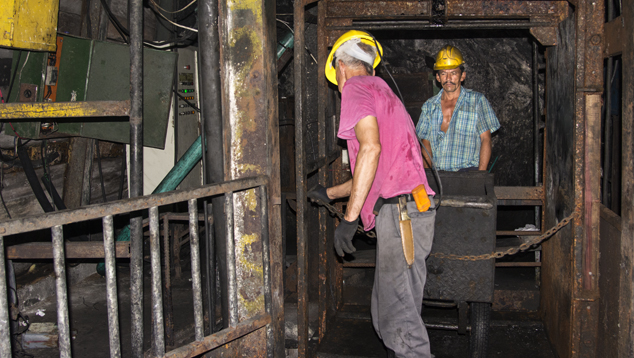
Mr. Puerto pointed out the importance of rock type and structure identification in emerald mining. In the sedimentary-type deposits, structures such as faults are especially important for emerald crystallization. In the western belt, almost all the emeralds were formed within compressional structures such as reverse and tear faults. The faults cross-cut the organic-rich calcareous shale, providing the space while the shale and hydrothermal fluids supplied the necessary ingredients for emerald mineralization. At the tunnel, geologists and miners follow the two major parallel faults of Río Minero and La Pita. The La Pita fault is a reverse fault, a typical structure developed in a compressional environment. Calcareous shale, the major component of the Muzo formation, is the target host rock for miners. After locating the host rock and structures, prospectors look for indicator minerals to trace the emeralds.
Zuliana de Esmeraldas has a two-stage distribution protocol. There are about 18 partners, and each visits in person or sends a delegate. The company extracts the emeralds, taking care not to break the crystals, and puts them in bags in the presence of the partners. The bags are sealed and locked in a safe, and a partner or delegate keeps the key. Once enough production has accumulated for the partners to sell, they wash and weigh the emeralds and put them in a security bag. The company’s shareholders remove the emeralds in everyone’s presence. They check the signatures, make sure all procedures have been followed, and schedule an auction. Outside merchants sometimes come to the auction and deal with people they know or buy the emeralds themselves.
Mr. Puerto pointed out three major production periods for La Pita, starting in the southern sector in 1999. They built shafts, did prospecting and geological exploration, and moved to the northern area, where they had good years in 2001 and 2002. In 2007 and 2008, they had a large production at the floor level, followed by considerable yield in 2010 and 2014. La Pita’s production since 1999 is estimated at over $1 billion in rough emerald value.
Cunas. The Cunas mine, owned by Esmeraldas Santa Rosa S.A., has become one of the most important producers along the Río Minero. The Cunas mine camp is located above the tunnel, and the route to the mine was heavily guarded. The tunnel extended several hundred meters to a shaft where a working productive zone was active. It was a typical tunnel-style Colombian emerald mine but very different from La Pita, especially in terms of temperature and air quality. While Cunas also had ventilation tubes and mechanical pumps for circulation, it was much hotter and more humid, reminiscent of the Pavimentado and Bonanza mines at Coscuez. Water rushing through the mine sometimes reached our boot tops, and the air had to be monitored for the buildup of dangerous gases. Ore was carted out of the mine, and emerald-bearing material was identified as it was removed from the rock face, bagged and sealed, and taken to a vault.
Consorcio. The Consorcio mine was closed at the time of our visit. When author AL visited in 2005, it was one of Colombia’s most productive mines. Prominas de Zulia, now Zuliana de Esmeraldas and also the owner of La Pita, was Consorcio’s first owner when it was discovered in 1999. Initial production was impressive, and by 2001 Victor Carranza was a partner. The company formed subsequently was Consorcio Minero, with 50% belonging to Esmeraldas Santa Rosa (owner of the Cunas mine) and 50% to Zuliana de Esmeraldas. Estimated production value between 2001 and 2008 was about $1 billion (J. Puerto, pers. comm., 2015). A robbery in 2008 led Mr. Carranza to file for bankruptcy, ultimately canceling the agreement between Esmeraldas Santa Rosa and Zuliana de Esmeraldas, and the mine was still closed in 2015 due to ongoing litigation.
Western Belt Mine Markets. As with Chivor, the miners in the western belt usually have rough emeralds for sale at lunchtime or the end of the day. Larger mines often allow locals to wash their tailings and keep the emeralds they find. However, there are some very structured mine markets in the western belt. The largest are the La Playa market on the banks of the Río Itoco, the El Chacaro market at Coscuez, and the La Pita mine market in the Maripí area.
The El Chacaro market was very busy, with miners and dealers offering a wide variety of rough qualities and sizes for sale. When author AL visited in 2005, it was not uncommon to see miners and dealers carrying guns. This time no guns were visible, and there was more trading. The market also offered restaurants, bars, and gambling. When miners and dealers saw a potential buyer, they would put down their drinks or walk away from the gambling table to show their emeralds. There was a bustle of activity in the street, with the mountains and mines as a backdrop. Author JM obtained many emerald samples from miners here.
Also in the Muzo area, we visited the La Playa market, on a hill overlooking the Río Itoco and the Minería Texas Colombia mining area. Here many independent miners and dealers were selling emerald rough. Midmorning activity was brisk, especially after MTC trucks had dumped their tailings by the river and thousands of locals washed through them. After the major trading, miners relaxed at the makeshift bars in the small market (figure 24). One of the most striking scenes was a husband and wife covered in black shale, examining a rough emerald crystal from the MTC tailings.
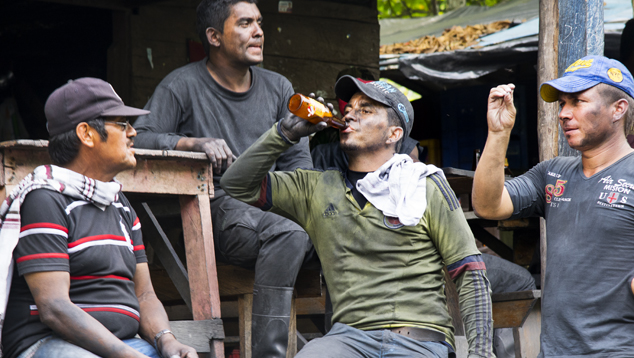
In addition to the mine markets in the western belt, the town of Muzo is one giant emerald market, with several blocks of activity and miners and dealers offering rough for sale in the streets, shops, and restaurants (figure 25). At peak times, dealers and buyers stood shoulder to shoulder. A local election was also taking place, and many people were out in the streets supporting candidates. No guns were seen in Muzo, either, which was not the case in 2005.

CUTTING AND TRADING IN BOGOTÁ
In 2014, the Colombian emerald industry exported more than two million carats, valued at $147 million, mostly to the U.S. and Asia (Angarita, 2015). For a complete picture of the industry, we returned to Bogotá. Our first stop was the Centro de Desarrollo Tecnológico de la Esmeralda Colombiana (CDTEC), a gemological laboratory and research center. We then visited dealers and cutters in the Emerald Trade Center and street dealers outside the center.
Former general director Dr. Carlos Julio Cedeño gave us a tour of CDTEC, a nonprofit organization established in 2008 that is partly owned by the Colombian government and partly by the major trade associations, among them Fedesmeraldas. CDTEC’s mission is to provide research, identification, and certification of gemstones, primarily emeralds. Their laboratory reports identify the material and type of enhancement and certify Colombian origin. They are also involved in testing a natural filler material (developed by the trade associations) that is durable and can be removed and refilled, as well as research on the origin of Colombian emerald through chemical fingerprinting. CDTEC analyzes about 70% of the high-end goods leaving the country (G. Angarita, pers. comm., 2017).
The Emerald Trade Center, built in 1963 and renovated in 1992, is a fourteen-story building that houses about 40 jewelry stores. It also has office space for dealers, cutters, treatment facilities, and services such as money exchanges, brokers, and shipping. We visited the offices of The Best Emeralds, where we saw three cutters faceting and preforming emeralds ranging in weight from 3 to 20 ct. We were fortunate to be there while their master cutter sawed and preformed a 700 ct piece of rough (figure 26) into numerous stones, some weighing over 50 ct after faceting. In Bogotá we also experienced firsthand the legal export process as we prepared our reference sample collection for shipping.
Outside the Emerald Trade Center, the street dealers were very busy on both days we visited. The number of dealers and the trading volume seemed significantly higher than in 2005. Most of the trading was between local dealers looking to fill orders, but there were also some foreign buyers. Cell phones were an integral part of the street business, with dealers constantly on the phone quoting offers to their suppliers or checking interest from potential buyers.
In Bogotá’s free trade zone we visited Colombia Texas Transformadora (CTT), owned by Muzo Emerald Colombia, where the rough from the MTC mine in Muzo is sorted and cut. The cutters had years of experience, and the facility was divided into sections for further quality sorting, planning and marking the rough, sawing, and preforming. Details regarding the tunnel of origin and date of mining are transferred to the cut stone. A certification of origin and traceability is provided for each cut stone, documenting the date, place, and time of extraction and its journey through the manufacturing process. The report also comes with photos from each step, the weight from rough to final stone, and a declaration of the filler material (normally cedarwood oil). Since 2011 CTT has received the Quality Systems Management ISO 9001:2008 certification granted by Bureau Veritas, with accreditation from the U.S. ANSI-ASQ National Accreditation Board (ANAB) and the United Kingdom Accreditation Service (UKAS). The Bogotá facility also works with cutting workshops in New York, Hong Kong, and Paris.
A CHANGING INDUSTRY
As we documented the mine operations and interviewed the miners, management, and owners, we saw how the industry has evolved. Most of the changes we witnessed were also discussed during the Bogotá Emerald Symposium.
According to the Ministry of Mines, 63% of all Colombian mining activity is informal (figure 27), and as a result the country does not receive the proper tax revenue (Ulloa, 2015). One of the government’s main focuses for mining is organization and formalization. It has adopted five pillars and a “three-door approach” to bring as many guaqueros as possible into the legal mining system.
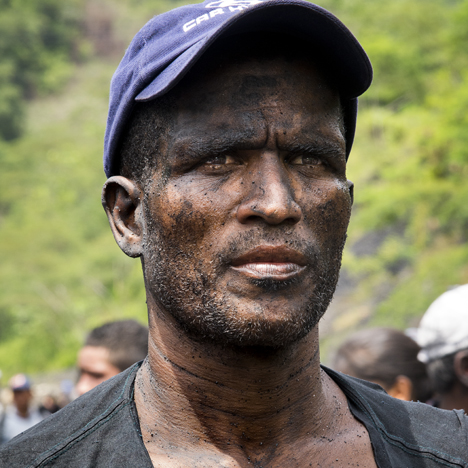
The five pillars of the mining policy are:
- Information: Improve the accuracy and trustworthiness of national mining resources through an improved mining census. Increase joint collaboration and communication between agencies such as the Ministry of Mines, the National Mining Agency, the National Hydrocarbons Agency, the Mining and Energy Planning Unit, and the Geological Service. Create reliable traceability through the Unique Register of Mineral Traders (RUCOM) certification to register Colombia’s mineral marketers with ANM. RUCOM certification requires detailed information on where and when the minerals were mined. If marketers do not have this certification or cannot document the provenance, the minerals may be seized.
- Legal security: Legal and technical guidelines for mining depend on the classification of an operation as small, medium, or large. The realities of these different size categories require customized environmental guidelines and technical assistance.
- Infrastructure: Identify and develop infrastructure needs for the mining community, particularly transportation to and from the mines.
- Trust: Develop genuine trust between mining communities, mining companies, and the government through improved communication.
- Competitive conditions: Strengthen partnerships and cooperation with companies in each sector. Promote Organisation for Economic Co-operation and Development (OECD) guidelines for multinational companies to maximize benefits to communities and the country. Provide capital to small- and medium-scale mining companies through a microcredit program from Banco Agrario and the Ministry of Mines (Unninayar, 2015).
The three-door approach provides options for formalizing small-scale independent mining that is not operating legally:
• Formalization: The government uses public and private partnerships, regulation, and traceability policies, while providing technical assistance and legitimate financial support through banks to these miners.
• Reconversion: If informal mining is being carried out in areas where mining is not allowed or not viable, the government works with other organizations to provide alternatives for work in other sectors.
• Law enforcement and judicial action: If miners carrying out illegal operations do not wish to work in the formal system or be converted to other industries, or if they are involved in criminal activity, the government will vigorously pursue judicial action (Unninayar, 2015).
All exploration and mining concessions are granted by the government through the National Mining Agency. Of Colombia’s commercial mining operations—which include gold, platinum, coal, limestone, and other materials—the 359 emerald concessions represent 3.6% of the total number. (Granados, 2015). The emerald concessions cover approximately 88,000 hectares, less than 0.1% of Colombia’s total area. About 10% of them are currently in operation. Total mining royalties for 2012 through 2014 were $4.6 million. While the industry’s overall size and revenue are small on a national level, the impact on local mining communities is significant (Granados, 2015).
In 2015 there were 178 registered emerald traders under RUCOM, and as of 2017 there are 5,150 (G. Angarita, pers. comm., 2017). The National Mining Agency received 400 new applications for emerald mining concessions from domestic and international companies in 2015. Multinational companies such as MTC are investing or have shown interest in investing in the industry and revitalizing it with modern technology and mining methods. These companies have stressed best business practices and corporate social responsibility as part of their branding campaigns, leading to further dividends in these areas for domestic companies. This has influenced Colombian companies to modernize and formalize to become more competitive. Colombia is one of 52 countries that have implemented the Extractive Industries Transparency Initiative (EITI), an international standard of mining governance and accountability.
When author AL visited the country in 2005, many miners were not paid a salary but were allowed to take some production in an arrangement that was not entirely structured. Miners at different locations, including some of the larger operations, noted that taking too much could be a fatal misstep. At the formal operations we visited during this trip, all of the miners reported that they received a salary, social security, and medical benefits, along with a share of the production. Gone was the sight of dealers and miners armed with guns at the mine markets.
This is not to say that there are no longer issues of grave consequence. Robbery and theft still occur along the supply chain, as they do in most countries that produce colored gemstones. In May 2015, more than 1,000 people took over the MTC mine for over two days and extracted emeralds from a newly discovered pocket. Police eventually gained control, but only after a significant loss. MTC’s director believed the raid was conducted by a large, well-armed, and organized criminal group (Burgess, 2015). A facility for military troops was being constructed near the mine during our visit.
The move to larger, well-funded mining companies in Colombia and other countries is an inevitable and beneficial development. The balance that should exist between small-scale miners, local communities, and multinational companies is often difficult to achieve. But this balance is essential to ensure a consistent and transparent supply chain, ethical practices, and a positive image of the industry.
In 2015 Gemfields acquired a 70% interest in Coscuez mining and 20,000 hectares in the Muzo and Quipama districts for emerald mining (Gilbertson, 2015). Gemfields has since pulled back from operations in Colombia to focus their efforts in Africa.
The Colombian government welcomes and supports foreign investment and participation in the industry (Angel, 2015), which brings formalization, tax revenue, transparency, best business practices, branding, environmental standards, modern methodology and technology, and employment. Many members of the Colombian emerald trade also welcome foreign investment, as they believe it encourages their own development (U. Montenegro, pers. comm., 2015). But others feel that foreign involvement in the Colombian emerald industry should not come at the expense of local businesses, as that would not truly lead to employment and beneficiation. The new generation of Colombian emerald industry leaders look to bring the country into the modern business world while preserving local traditions (see box A).
| Box A: The New Generation |
| Gabriel Angarita (figure A-1) has been president of the Colombian Association of Emerald Exporters (ACODES) since 2009 and also serves on the board of CDTEC, the gemological laboratory in Bogotá. Mr. Angarita, whose father has been in the industry for more than 40 years, has been around emeralds as long as he can remember. The Angarita family is involved in buying rough directly from the mines, dealing the rough domestically, and cutting and selling the stones on the international market through their office in Bogotá. (The Best Emeralds, profiled in the “Cutting and Trading in Bogotá” section, is one of their interests.) Figure A-1. Gabriel Angarita, president of ACODES, is part of the younger
generation that is bringing innovation to the industry and helping create a global
brand image for Colombian emeralds. Photo by Andrew Lucas.
Today, most of Mr. Angarita’s time is spent working on behalf of ACODES. His role as president of the association initially took up about two hours per week, but today it is a full-time endeavor. The association, founded in 1979 to improve Colombian emerald exports, now pursues a wide range of objectives.Mr. Angarita’s first major challenge was to bring the Colombian companies together to work in an organized manner. Dealers initially objected to representing Colombia together at trade shows—they thought their customers might be “stolen”—but after a couple of years they found that this type of collaboration actually increased customer interest. The branding of Colombian emeralds has been another challenge for Mr. Angarita. First he had to convince the industry of the need to create a brand. He has worked to create pavilions at international shows, increase supply chain transparency and integrity of transactions, ensure full disclosure (including treatments), and educate the international trade and consumers about efforts to eliminate violence and crime. By assuring the integrity and “cleanness” of the product, he hopes to create a brand image like the one maintained by Colombian coffee since the 1980s. ACODES promotes the Colombian emerald brand through efforts such as the “Mother Gems” campaign linking the love of one’s mother and Mother Nature with the lush green of the Colombian landscape and its emeralds. Working with CDTEC, the association seeks to assure customers of the consistent use of proper nomenclature, disclosure, and country of origin for Colombian emeralds. ACODES is also collaborating with CDTEC to develop a filler material for clarity enhancement that is completely natural, durable, and removable. Mr. Angarita said the biggest changes he has seen in his career are the dramatic reduction of violence in the mining areas and the increase in transparency. Although violence and criminal influence have hurt the industry in the past, he said this has led to strict regulations and improvements in transparency. The next generation of industry leaders is working to further improve the industry’s image and dispel lingering misconceptions. He also wants to see greater benefit to the country, specifically in the mining communities, from the involvement of multinational companies. While he supports the benefits of increased tax revenue, employment, and technology, he also wants to see development in education at the community level. Mr. Angarita envisions a transfer of knowledge beyond the emerald industry that will better prepare communities and the next generation to compete in the global economy. Ultimately, he says, the richness of Colombia’s emerald resources should enrich the minds of the people. |
CONCLUSION
The opportunities for the Colombian emerald industry are strong. Colombian emerald is already the standard that emeralds from all other sources are measured against. National geological studies indicate that only 20% of the country’s emerald reserves have been exploited (figure 28). New systems of formalization, tracking, and exporting are being incorporated to ensure greater transparency. Violence has declined, and security at mining locations has improved.
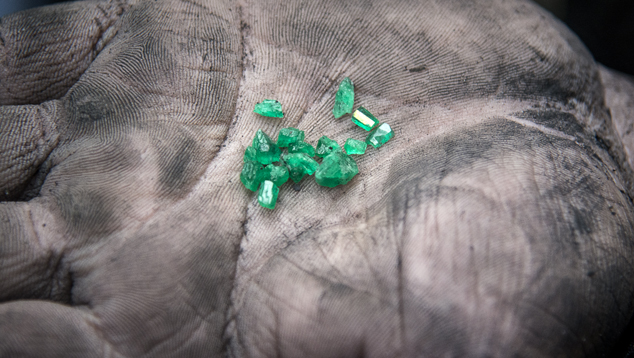
Multinational companies are making an investment that seems to guarantee increased production, even as local mining operations are modernizing. The Colombian emerald industry has already achieved significant beneficiation by developing a cutting industry that handles the majority of domestic production and meets the highest international standards. Indeed, Bogotá’s cutters are considered the global experts on cutting Colombian emerald. This cutting industry was built from within, something many African countries hope to achieve. A new generation of industry leaders looks to improve the branding of these emeralds and increase global market share.
These opportunities come with challenges. The image of Colombia as a land of violence and drugs often carries over to emerald and must be overcome. The relationship between new foreign mining and local miners is still delicate at times. The interests and rights of both parties must be protected, and formalization of the mining sector should come with a fair system to include independent miners. None of these challenges is insurmountable, and the industry has the potential to reach unprecedented heights. For Colombian emeralds, the momentum for change seems irreversible.



